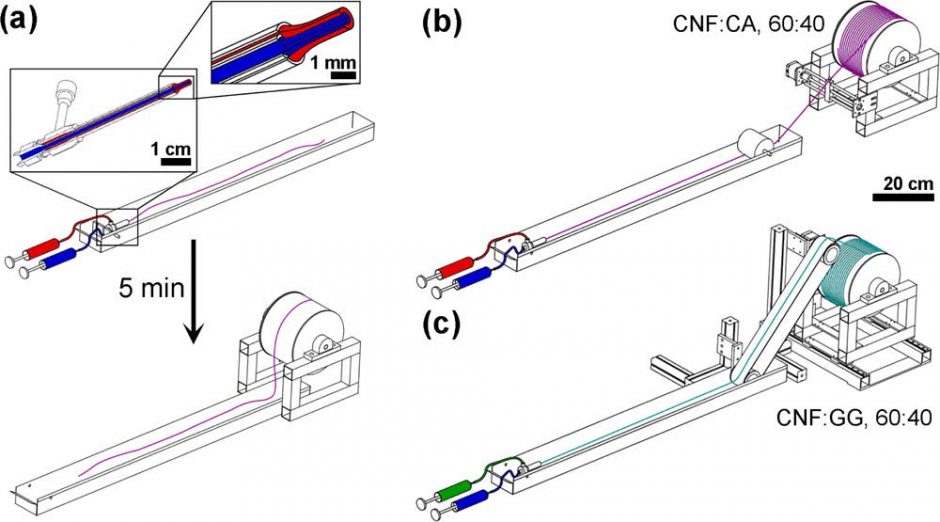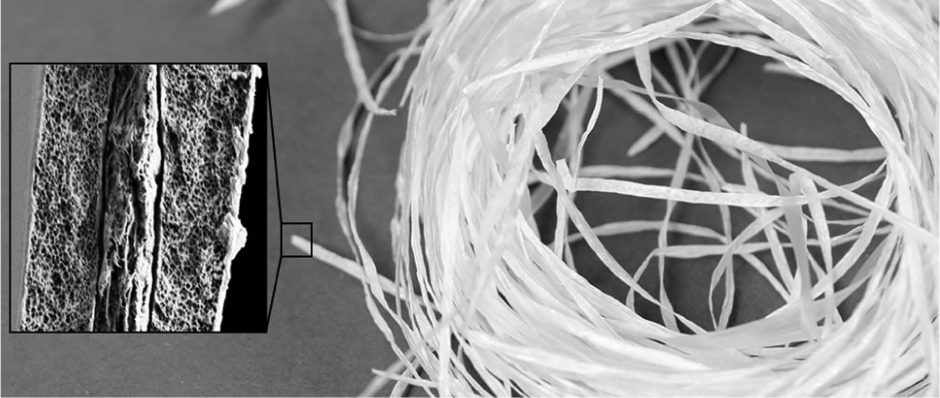Films, filaments and hybrid materials
We employ the versatility of lignonanocellulose and cellulose derivatives in novel film, paper and filament structures in combination with other nano- and functional materials.
Bionanomaterials are often thought to be difficult to process and limited in functionality. To enable feasible processing, we work on paper, film and filament structures which can conveniently fit into existing industrial processes. Furthermore, we see papers, films and filaments as useful model structures for demonstrating novel functionalization.
Even though biomaterials can natively have a limited functionality, they typically have a promising chemical versatility. We employ this versatility for new purposes, such as water-resistant, thermoformable, electrically conductive, luminescent or antibacterial cellulose. With this work, we target applications that will be important for tomorrow’s society, such as composite materials, packaging, energy harvesting and rapid diagnostics.


Schematic illustrations of the used spinning systems (left panel) and as-spun filaments from nanocellulose (right panel) (Ref.4)
Selected References
1) Wang L., Borghei M., Ishfaq A., Lahtinen P., Ago M., Papageorgiou A.C., Lundahl M.J., Johansson L.-S., Kallio T., Rojas O.J., Mesoporous carbon microfibers for electroactive materials derived from lignocellulose nanofibrils, ACS Sustainable Chemistry & Engineering, 2020, 8, 8549-8561.
2) Wang L., Ago M., Borghei M., Ishaq A., Papageorgiou A.; Lundahl M., Rojas O.J., Conductive carbon microfibers derived from wet-spun lignin/nanocellulose hydrogels, ACS Sustainable Chemistry & Engineering, 2019, 7, 6013-6022.
3) Tripathi A., Ago M., Khan S., Rojas O.J., Heterogeneous acetylation of plant fibers into micro- and nanocelluloses for the synthesis of highly-stretchable, tough and water-resistant co-continuous filaments via wet-spinning, ACS Applied Materials & Interfaces, 2018, 10, 44776-44786.
4) Lundahl M.E., Ville K., Ajdary R., Norberg N., Ago A., Cunha A.G., Rojas O.J., Absorbent filaments from cellulose nanofibril hydrogels through continuous coaxial wet-spinning, ACS Applied Materials & Interfaces, 2018, 10, 27287-27296.